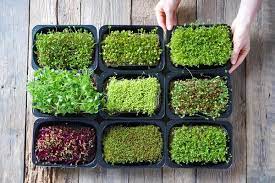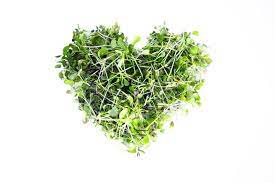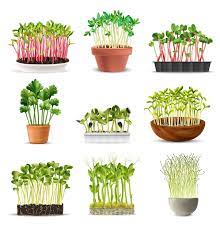In the world of nutrition and culinary innovation, microgreens have taken the spotlight. These tiny, vibrant greens have become a darling of chefs, health enthusiasts, and home gardeners alike. If you’re new to the world of microgreens, this beginner’s guide will introduce you to what microgreens are, their impressive nutritional value, and why they’ve gained such popularity.
What Are Microgreens?
Microgreens are young, edible plants that are harvested at an early stage of growth, typically when they have their first true leaves. They are smaller than baby greens but larger than sprouts, making them the perfect size for garnishing salads, sandwiches, and a variety of dishes. These petite greens come in a dazzling array of colors and flavors, from the peppery kick of arugula to the earthy notes of beet greens.
Nutritional Powerhouses
One of the primary reasons microgreens have captured the culinary and health-conscious world’s attention is their impressive nutritional profile. Despite their small size, microgreens are densely packed with vitamins, minerals, and phytonutrients. Some of the key nutritional highlights include:
Rich in Vitamins: Microgreens are loaded with essential vitamins like A, C, and K, which are vital for maintaining good health and supporting various bodily functions.
Abundant Minerals: These greens provide important minerals such as potassium, iron, and calcium, which are crucial for maintaining healthy bones and supporting overall well-being.
Antioxidant Power: Microgreens are packed with antioxidants, which help protect your cells from damage caused by free radicals. Antioxidants can potentially reduce the risk of chronic diseases.
Essential Nutrients: Microgreens are a good source of essential nutrients like folate, which is important for cell division and DNA repair.
Why Microgreens Have Gained Popularity
The rising popularity of microgreens can be attributed to several factors:
Flavor and Variety: Microgreens offer a burst of flavor and a colorful palette to dishes. Whether it’s the spicy bite of radish microgreens or the sweet undertones of basil, they can transform an ordinary meal into a culinary masterpiece.
Easy to Grow: Microgreens are beginner-friendly. They can be grown in small spaces, such as windowsills or balcony gardens, making them accessible to urban and suburban dwellers.
Quick Harvest: Microgreens have a short growing cycle, typically ready for harvest within 7-21 days, depending on the variety. This means you can enjoy the fruits of your labor relatively quickly.
Nutritional Benefits: As mentioned earlier, their exceptional nutrient density has positioned microgreens as a health-conscious choice. They offer a convenient way to incorporate more vitamins and minerals into your diet.
Chefs’ Secret Weapon: Many renowned chefs use microgreens to add a touch of elegance and complexity to their dishes, making them a must-have for anyone looking to elevate their culinary skills.
In conclusion, microgreens are not just a passing food trend; they are here to stay. Their unique flavors, nutrition, and versatility make them a delightful addition to your meals. Whether you’re looking to enhance your dishes or boost your health, microgreens are a small but mighty option to explore. So, roll up your sleeves, get your hands dirty, and start growing your microgreens for a delicious and nutritious journey ahead.




